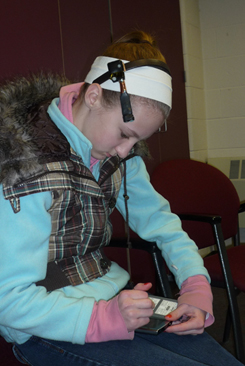 Researchers Investigate Daylight and Electric Light on K-12 Students' Well-being and Performance
Researchers Investigate Daylight and Electric Light on K-12 Students' Well-being and Performance
The Lighting Research Center (LRC) is researching the impact of daylight design on students’ well-being and performance in K-12 schools and is investigating the underlying biological mechanisms associated with this possible link.
Experiment
“We hypothesize that if light has an impact on students’ performance and well-being, it is by promoting their circadian entrainment to the solar day, especially in winter months,” says Figueiro. “Those who are not exposed to enough daylight will experience a more pronounced delayed circadian phase, which will result in sleep problems and more severe stress.”
In response to the earth’s 24-hour cycle, all species have evolved circadian rhythms (e.g., sleep/wake behavior) that repeat approximately every 24 hours. In humans, circadian rhythms are synchronized, or entrained, to the solar day most strongly by the Earth’s natural light/dark cycle. Lack of synchrony between light and dark and sleep/wake cycles may lead to sleep deprivation, as well as symptoms of stress, mood disorders, and perhaps immune system deficiencies. In adolescents, sleep deprivation has been linked to their inability to fall asleep at appropriate evening hours and their need to get up early for school the following morning.
Figueiro, Leslie, and Rea will test the hypothesis that a lack of entrainment to the 24-hour solar day, due to reduced daylight availability in winter months, is the underlying mechanism linking daylight to well-being and performance.
“If the lighted environment in schools promotes circadian entrainment, it will help students fall asleep earlier, and therefore reduce their sleep deprivation. In turn, students should feel better and perform better in school,” Figueiro says.
The final outcome of the project will be a set of guidelines for architects, designers, and school administrators to enable the development of school building designs that maximize students’ health, well-being, and performance.
Publications
Figueiro MG & Rea MS. 2010. Lack of short-wavelength light during the school day delays dim light melatonin onset (DLMO) in middle school students. NeuroEndocrinology Letters. Vol 31, No. 1. Pages 92-96.
Read the formal press release here.
View a video clip about this story from "Voice of America" here.
Sponsors
United States Green Building Council (USGBC)
Trans-National Institutes of Health Genes, Environment and Health Initiative
To read more, search for related articles, or view a bibliography of published articles, click here.



